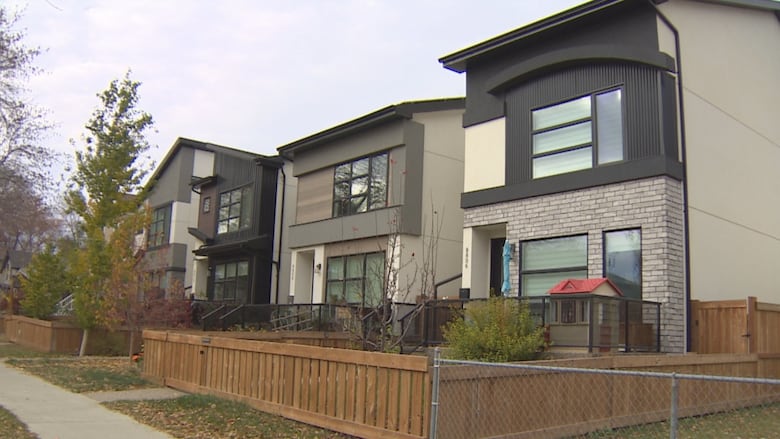Edmonton sees record boom in housing starts, according to CMHC report
Experts say increase is driven by affordability and zoning laws

Edmonton saw an 82 per cent increase in housing starts in June compared to the same month last year.
According to Canada Mortgage and Housing Corporation (CMHC), the city recorded 2,689 new housing starts last month, up from 1,475 in June 2024.
It was the highest number of housing starts ever recorded for the Edmonton Census Metropolitan Area (CMA) in a single month.
Experts say diverse housing types and a welcoming planning environment are key to meeting the city's rapid population growth.
Lyla Peter, director of development approvals and inspections for the City of Edmonton, says the sharp increase in housing starts is no surprise.
"We have seen a high and sustained volume of applications for housing over the last year-and-a-half," she said in an interview.
"It is a great reflection of all the work that we've been doing to continue to support housing delivery within the community."
The surge includes a mix of housing types, from single-detached homes to apartments and row houses, being built both in infill areas and on the city's outskirts, said Peter.
Housing starts in urban centres with populations of 10,000 or more saw a 14 per cent year-over-year increase in June, reaching 23,282 units compared to 20,509 units in June 2024. The year-to-date total also rose four per cent from the same period in 2024, now standing at 114,411.
According to the CMHC, homes like single-detached and row houses — along with rental apartment starts — are driving the growth.
"Year-to-date starts in Calgary are currently higher than Toronto," CMHC wrote in an email.
"Edmonton trailed just Vancouver and Montreal with 2,689 actual starts in June — the most on record for the CMA."
One key to Edmonton's success is its new zoning bylaw, said Peter, which supports a wider variety of housing types such as semi-detached homes, row houses, and suites.
"Because we've opened up housing types across the whole community, we've created a lot of opportunity," she said.
Peter said that while infill development can bring challenges to existing communities, it drives up affordability.
"I do understand the concern that our community is facing when it comes to seeing their neighbourhoods change," she said.
"However, one of Edmonton's greatest strengths is our housing affordability and we continue to see large population growth coming to our city."
Scott Fash, CEO of BILD Alberta, also pointed to the city's ability to quickly deliver homes as a major advantage.
"Through high levels of construction … we've been able to maintain our affordability, which in turn makes us more attractive to people moving here," he said.
Neal LaMontagne, a professor at University of Alberta's School of Urban and Regional Planning, said the increase is partially due to migration from other provinces.
"We have this housing demand, we do need the supply and we're getting that supply," he said.
"If you have consistent population growth plus new permissive rules, plus constrained investment opportunities elsewhere, things are looking good for Alberta."
The city said ongoing efforts include the implementation of an automated development permit system for low-density housing, to stay ahead of the curve in housing delivery.


